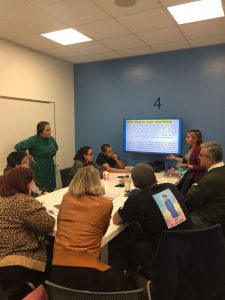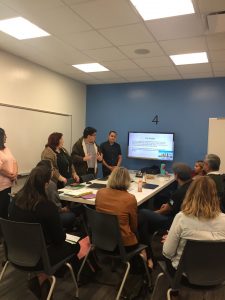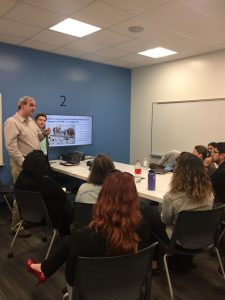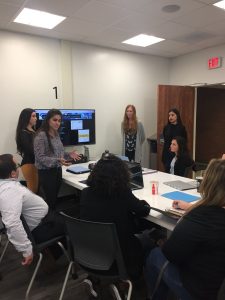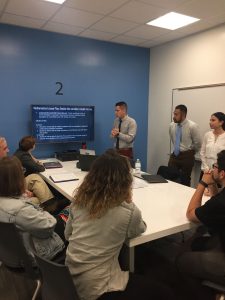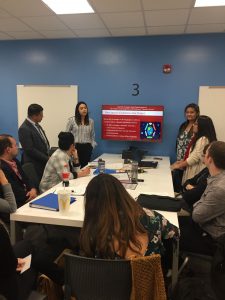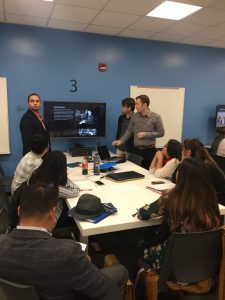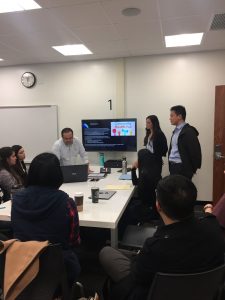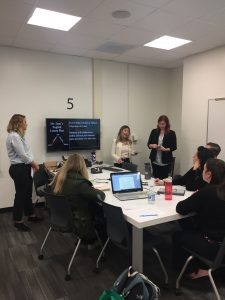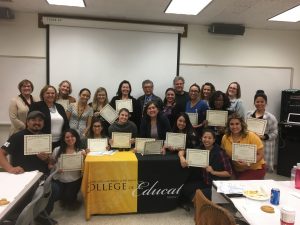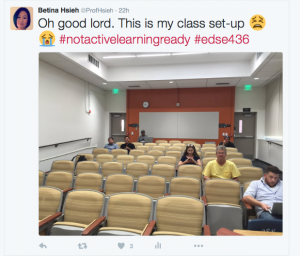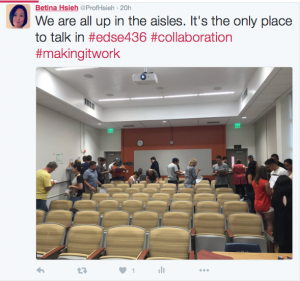Pictures say a thousand words so I won’t say (as) much in this post, but I’ll explain these pictures and what they mean to me. On Wednesday night, my preservice candidates in my secondary literacy course got to present Project Based Learning assessments aligned with Career & Technical Education pathways and state content standards, disciplinary lesson plans that would lead to these assessments and reflections on their take-aways from my course. Usually, this presentation is done to their other colleagues in the course. On Wednesday, my current Masters candidates (who are practicing teachers in a curriculum and instruction cohort focused on Linked Learning principles) and my former credential students (now in the classroom) came to be the audience, give feedback and tell about their experiences in the classroom. Here they are presenting (each to groups at individual tables thanks to our awesome Active Learning classrooms):
It was an amazing night and a super meaningful way for me to end the semester with my preservice students. It was a night based on reflection, growth, professional collaboration and learning. I could not have been prouder.
And, following our good-byes, my Masters candidates “kidnapped” me to go to our final program celebration of the semester, where we got to acknowledge one another and celebrate their accomplishments:
I came home that night, and the next morning opened a small gift that was presented to me the day before. 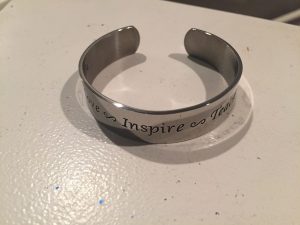
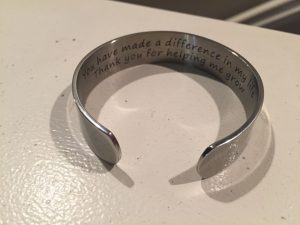
This teaching bracelet and this night reminded me why persistence is important and why I champion professional learning and growth, professional and personal identities in the classroom, and relevant curriculum that draws students in and helps them to reach their goals. We can do amazing things as educators when we walk together and push one another. I am humbled by my students and the opportunities to engage in this work, and I am so very grateful for growth & collaboration with them on the journey.

